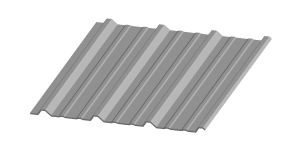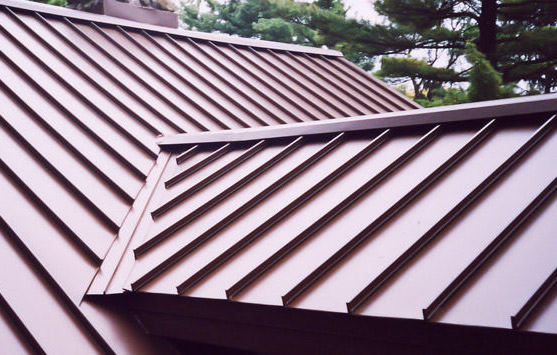How to Maintain Longevity
If you need to quickly have access to cut steel metal panels, rather than returning to the warehouse or manufacturing facilities, it is possible to cut them at the job site. There are many different factors that can affect metal panels being cut on-site, including tools, methods and location. It is important to keep protocols in mind when cutting metal without leaving the site. If you’re unsure about proper procedures and protocols to cut metal at your job site, consider contacting Allied Steel Buildings for more information. If you’re looking for some quick help, here are some tips:
Methods: In order to cut panels without leaving your site, it is essential to protect the cutting edges to ensure the quality of the panel. In order to get the best cut, follow cutting procedures from the warehouse or manufacturing facilities. This will help maintain the quality of the panel.

First, it is important to understand that wall and metal roof panels are typically made from Galvalume®-coated steel coil. This provides the panel with longevity and protection. Certain tools and cutting methods are used by the manufacturing facilities while cutting coated metal coil in order to protect the edges from deterioration or decay (eg.: corrosion, rust or rust spots). Additionally, coated metal is typically cut to size during fabrication while laying flat and shearing the metal, prior to going in the roll former or after the exit of the roll former with a profile shear. These methods protect the cut-edge from corrosion by “wiping” the Galvalume coating on the edge of the panel.
It is also important to protect the steel edges from deterioration if on-site cutting is required once the panels arrive. Following the recommended protocols will also protect the steel edges.
Location: Metal panels should be cut on the ground, instead of on top of other metal panels or the roof, for best results. This is because particles of debris from the steel, also called swarf, are produced as the metal is cut. It often falls from the cut area. Falling particles on the metal panels or roof can cause damage or permanent staining. If a significant amount of particles fall in the same spot, it can cause rust to go all the way through metal roof panels. As a result, cutting metal panels on the ground is the safest option as this allows the swarf to be collected and discarded in an appropriate manner.
Tools: Metal wall panels or roof panels should be cut with tools such as snips, nibblers or shears as these prevent rusting edges. Tools such as abrasive blades, saws, torches and grinders should never be used as they may cause rough or irregular edges which are not finished or coated. This can lead to corrosion or deterioration of the metal. In addition to this, abrasive blades or skill saw blades can cause a large amount of swarf to be thrown in the air, falling onto other panels and damaging the metal. The swarf, still hot from the cutting, can embed in the panel coating, resulting in rust.
Tools Used to Cut Metal Panels On-Site
It is extremely important to use the correct tools while cutting metal panels in order to produce high quality results. Using the incorrect tools can result in a number of problems and damage to the metal, such as compromised building service life, voided warranties, and rust or rust stains. As a result, it is important that tools used to cut metal panels on the job site are able to provide 3 functions: wipe and preserve the Galvalume coating, protect the metal edges, and stay cool during cutting. Here are some recommended tools for on-site steel cutting:
Aviation Snips
Aviation snips are typically used for making small cuts on the metal panels. They can be used both in red and green. The red snips cut curves to the left while the green snips cut curves to the right. One benefit to using aviation snips is how they wipe Galvalume coating which is similar to a pair of factory shears. They also have a safety lock and a spring-loaded double pivot.
Electric Shears
Electric shears are typically used to make longer cuts in the steel (eg.: cutting a wall panel for the opening of a door). They are able to make straight cuts, while remaining clean and precise. In the course of the cutting process, the shears cut 1/4 inch of metal off the panel, resulting in smooth, flat edges along the cut. It also wipes Galvalume coating over the edges of the cut to offer protection from deterioration.
Metal Shears
Metal shears are typically used for bevel cutting a standing-seam panel at the hips and valleys. They are able to fit on a screw gun or battery-operated impact. Unlike the electric shears, mechanical shears do not take additional metal off the panel, resulting in a somewhat crooked edge. It also wipes Galvalume coating to protect the metal edges.
Nibblers
Nibblers are often used for cutting corrugations in the metal wall panels, creating openings for things like doors and windows. Nibblers are a high-quality tool that make cutting metal panels easy; However, nibblers are also very expensive and can cost several hundred dollars. If you cut a lot of corrugated metal panels, they may be worth the high price. Nibblers also wipe Galvalume coating across the metal edge with a punch and die. This creates small half-circles in the metal panels. It is important to be careful with the metal pieces that fall from the panel, as they can be sharp. They should be cleaned up immediately to prevent the sharp pieces of metal from scratching roof panels or becoming stuck in the soles of your shoes.
Skill Saws
Skill saws are able to be used for many different projects. They allow the user to cut either parallel to corrugations or across them. They can also cut the corrugations straight or at an angle. It is important that the saw blade is cool during cutting, so choose one that will not become hot. If the saw blade is hot, the Galvalume coating might melt on the metal edge, making it ineffective. A cool blade, however, will make the cut-edge smooth and coated.
Tools Not to Use to Cut Metal Panels
It is very important that you do not choose the wrong tool to cut metal panels at the job site, as it can cause damaging effects to the panels and the project. Examples of tools never to use include hacksaws, abrasive blades, grinders, torches and reciprocating saws. These tools will generate heat and melt the Galvalume coating, making it ineffective and causing edges to rust.
Final Thoughts
It is important to use the right tools and follow proper protocols as provided by metal panel manufacturers while cutting metal panels on the job site. This ensures protection for the panels, while avoiding damage and deterioration. Using the incorrect tools can cause deterioration, corrosion, rust or voided warranties. Contact your local Allied Steel Buildings representatives to find out more about recommendations for installing and cutting metal panels on-site.

